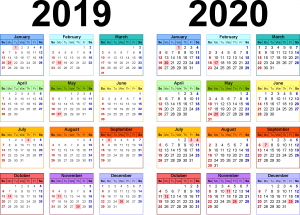
The first week is done.
I am fairly certain that I know the names of all of my new students. I incorporated puzzles and thinking challenges, and we had fun. All in all, it was a good week.
This year I am teaching one grade 6 math class, two grade 7 science classes, and two grade 8 math classes. It was a short week because of labour day, and I don’t teach science every day. My focus for the first 2-3 lessons in each class was games, cooperative strategies, and relationship building with my students. As usual, I took a lot of inspiration from the wonderful #MTBoS crew. Here is an overview of my opening week activities.
In science we played Science Buzz, a form of the game Taboo. One student is challenged with getting his or her team members to guess the word on the card, however there are five “taboo” words that the player cannot use in the clues. I found a free version of this game a few years ago from The Learned Teacher, and I modified the template for my purposes. At that point I taught grades 6, 7, and 8 science, and so I made a version for each grade that focused on the topics from the Ontario Science Curriculum. You can find my versions here.
I also did a cup stacking challenge. Each group of 3 or 4 students was given six cups, an elastic band, and a piece of string for each person. The strings got tied on the elastic band and the students had to pull on the string so that they could manipulate the elastic to move the plastic cups. There were six different challenges for the groups, with each challenge requiring the students to place the six cups in a different configuration. In the first three challenges the students were allowed to talk with each other, but no verbal communication was allowed in the last three challenges. Last year I got this task from the Middle School Science Blog, and you can find the link here.
On Friday I played Science Scattergories with one of the classes. For those who have not played Scattergories, a letter die is rolled and the object is to write a word that begins with that letter for each of the twelve categories on the list. You can read a full set of the game play instructions here. I found this version on the TES site for free. However I wanted all of the categories to be more science-based, so I adapted it and used some of the categories from the original document and added some of my own. I created two science based lists. First I looked for a random letter generator online and thought I had made a good choice. However when we began to play in class the generator kept pulling q’s, x’s, j’s, and other such letters that would have been quite a challenge for my students. I gave up on the digital generator and just wrote a letter on the board for each round. We played each list twice, with different letters each time. The students loved it and I would definitely play again. Perhaps next time I will adapt it for math. You can find my adaptations here.
In my grade 6 math class we played Set. Some of the students already knew how to play and they helped to teach the others. We played the digital version which offers a Set puzzle per day, and you can find that link here. I do have two copies of the card game, but I think I will need to purchase a few more so that each group can play together. In grade 6 I also used Robert Kaplinksy’s Open Middle problem for multiplying a two digit number by a one digit number. You can access that problem here.
In grade 8 we began with Sara Van Der Werf’s 100 Numbers task. The students were so engaged! We also tackled @mathequalslove‘s 2019 Challenge. I couldn’t find a digital copy of Sarah Carter’s 2019 Challenge, and so I had to tweak it from her 2018 Challenge. You can read about and access Sarah’s Challenges here. I also made 6 sets of her Perfect Squares Puzzle and had each group work on it. Again, all hands were on deck as they tried to figure out how to place the numbers. I used another Open Middle problem with my grade 8 students, this time a fractions problem written by Denise White. I wanted to give them some time to work on the answer, and so I left it with them over the weekend and we will revisit it tomorrow. You can access that here.
Finally, in grade 8 we played a little Nim. This was inspired by chapter 10 of Tracy Johnston Zager’s book, Becoming the Math Teacher You Wish You’d Had. In this chapter she talks about Nim and Nim Train. In the game of Nim each pair of students starts with ten counters. Students take turns removing 1 or 2 counters until the last counter is taken. The person who removes the last counter from the pile wins. I had my students play several rounds until they could begin to determine the strategy. We discussed the strategy and whether it was better to play first or second. I then had my students add one counter to the pile to see if the strategy changed or stayed the same. We tried with 10, 11, and 12 counters, and then discussed what we learned. After that we switched to Nim Train. In this version of Nim the students need to add counters to form a train of ten counters, either adding 1, 2, or 3 counters at each turn. The player to add the tenth counter to the train wins. The students quickly caught on to the strategy for this version of the game.
And that was only week 1.
It will be a great year.


